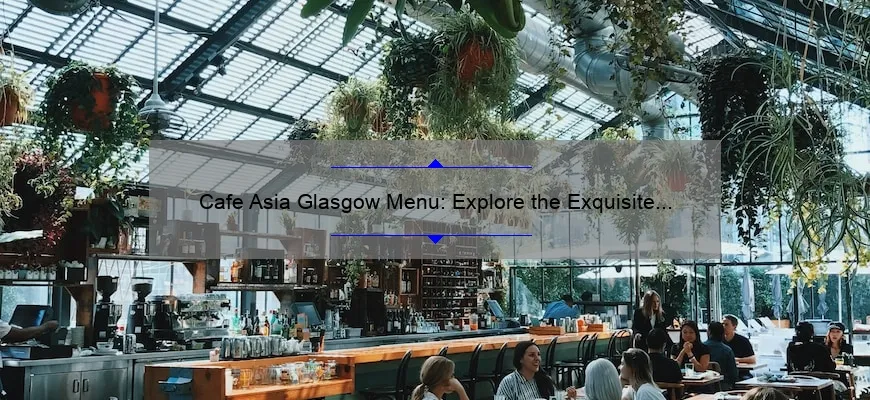- Short answer van gogh night cafe:
- Creating Your Own Van Gogh Night Cafe Masterpiece: Step-by-Step Guide
- Step 1: Gather Your Materials
- Common Questions About Van Gogh’s Night Cafe Answered
- What inspired Vincent Van Gogh to paint “The Night Cafe”?
- What makes “The Night Cafe” so special?
- What style does “The Night Cafe” belong to?
- Does Van Gogh put hidden messages in “The Night Cafe”?
- Is “The Night Cafe” a surreal or realistic painting?
- What was Van Gogh trying to communicate through “The Night Cafe”?
- How to Fully Appreciate and Understand Van Gogh’s Iconic Night Cafe Painting
Short answer van gogh night cafe:
Van Gogh’s “Night Cafe” is a famous oil painting created in 1888. It depicts the interior of a cafe in Arles, France at night, and features bold colors and dramatic lighting. The painting is considered to be an iconic representation of Van Gogh’s unique style and artistic vision.
Creating Your Own Van Gogh Night Cafe Masterpiece: Step-by-Step Guide
Vincent van Gogh’s “The Night Cafe” is a stunning work of art that depicts the vibrant and immersive atmosphere of a French cafe in Arles. The painting is famous for its bold use of colors and vivid details that bring the scene to life. If you’re looking to create your own Van Gogh masterpiece, then “The Night Cafe” is an excellent choice! In this step-by-step guide, we’ll walk you through the process of creating your very own version of this iconic painting.
Step 1: Gather Your Materials
Before getting started on any painting project, it’s essential to gather all the necessary materials. For this project, You will need:
– A canvas or canvas board
– Acrylic paint (you can use oil paints as well)
– Brushes (thin and thick tips)
– Palette knife
– Palette
– Easel (optional)
Make sure to choose high-quality paints and brushes as they can make a significant difference in the final product.
Step 2: Sketch Out the Composition
With your materials ready, you can now start planning out your composition. Using a pencil and paper, draw a rough sketch of how you want your painting to look like, focusing on important elements such as tables, chairs, lamps, and people.
van Gogh’s “The Night Cafe” has several prominent features such as the pool table in the center of the room, bright yellow walls with green accents, pink floors with black patterns.
Step 3: Start Painting
Once you have outlined everything in your sketch letting these outlines dry slightly before moving forward. After that start by working on one element at a time like walls or ceiling using shades darker than those needed for the final version.
No worries about mistakes. One standout feature in van Gogh’s works is his use of visible brush strokes that add texture and emphasize movement -so don’t be afraid to experiment!
Pay particular attention while mixing colors to achieve closest shades as possible. It will require considerable patience but will be worth it.
Step 4: Up the Ante with Details
It’s time to add some life into your work of art by bringing in details such as people and their expressions, table decorations, and lighting fixtures.
‘The Night Cafe’ has a mix of warm yellows and vibrant greens that highlight all the subjects vividly. Keep practicing brush handling techniques, mixing suitable colors repetitively.
For added depth or if you’re feeling confident use a palette knife prove useful in applying thick globs of paint with textural qualities like van Gogh did himself. Remember noticeable brush strokes can be one of your selling points!
Step 5: Finally Fine-tune the Work
After putting considerable effort into each corner bring everything together now by ensuring there is balance within its composition. Stand back from the artwork every so often with fresh eyes to detect any imbalances or paint accidents caught early modifying compositions is easier.
The painting process concludes when satisfied with work done varnish it once dry to preserve its color
Common Questions About Van Gogh’s Night Cafe Answered
Vincent Van Gogh is one of the most celebrated artists of all time, and his works continue to captivate viewers with their beauty, depth and emotional significance. One such masterpiece is his famous painting titled “The Night Cafe”, which depicts a bustling cafe in Arles, France at night. This striking work is renowned for its vivid colors, bold brushstrokes, and haunting atmosphere that captures the viewer’s attention from the very moment they first set eyes upon it.
Despite being painted over a century ago, “The Night Cafe” continues to generate immense interest among art enthusiasts and casual observers alike. With this in mind, let us delve deeper into some common questions about this iconic piece of artwork.
What inspired Vincent Van Gogh to paint “The Night Cafe”?
Van Gogh was an admirer of nighttime scenes and often found inspiration in their unique ambiance. For him, evening light had a severely different character compared to daylight hours and he sought to capture it on canvas. To create this particular painting, he sat down one night outside an Arles cafe observing those who passed by as well as interactions inside the cafe until closing time.
What makes “The Night Cafe” so special?
“The Night Cafe” is unique because of its vibrant use of color that dominates nearly every inch of the canvas. The various orange-yellow lampshades reflected onto tables against contrasting blue-green walls create lively visual interest while simulating a sense of close space causing anxiety within viewers; reflecting both the artist’s personal angst-filled personality disorder combined with societal concerns on isolationism felt during that time period.
What style does “The Night Cafe” belong to?
“The Night Cafe” belongs loosely in Post-Impressionism as part of van Gogh’s body of work but can be argued as having strong Art Nouveau tendencies due to its rich mixture between surreal atmosphere through the use of color contrasts alongside modern urban society background style depicting everyday life.
Does Van Gogh put hidden messages in “The Night Cafe”?
Van Gogh was known for hiding hidden meanings and messages in his paintings, but with “The Night Café,” there is no need to look for any secret symbols or meanings. The painting portrays an immersive view of ordinary interaction between ordinary people.
Is “The Night Cafe” a surreal or realistic painting?
“The Night Cafe” doesn’t belong strictly to any artistic category; it blends both dramatic realism and dream-like surreality. Though its central figures are rendered realistically, van Gogh’s use of exaggerated colors and unusual composition subvert the mon naturalistic character adding a sense of unreality that focuses primarily on the emotion and atmosphere aspect instead.
What was Van Gogh trying to communicate through “The Night Cafe”?
Many art experts think that Van Gogh aimed to do two things with this painting: firstly, he wished to evoke the surreal ambiance he encountered while living in Arles by capturing its nocturnal vibrancy & loneliness at the same time while secondly engaging viewers with a broad moral message about human conditions by emphasizing social isolationism
How to Fully Appreciate and Understand Van Gogh’s Iconic Night Cafe Painting
Vincent van Gogh’s iconic painting The Night Cafe is a masterpiece that holds a special place in art history. Painted in 1888, the artwork captures the bustling atmosphere of a cafe in Arles, France during the late hours of the night. The vibrant colors and bold brushstrokes used by Van Gogh make this painting an exciting and thought-provoking study.
To fully appreciate and understand Van Gogh’s Night Cafe painting, it is important to explore its artistic features and historical context. In this blog section, we have laid out some essential tips you can use to delve deep into the masterful world of Van Gogh.
1) Consider color choice
Van Gogh uses dramatic colors across his work but with Night Cafe, he took his experimentation with palette to new heights! He uses complementary colors like yellow-green for the walls and floors which are perfectly matched by red-orange chairs with yellow cushions. These contrasting shades create a dynamic vibrancy in space giving a feeling of energy and liveliness.
2) Tackle composition techniques
The composition of The Night Cafe is truly magnificent- it draws viewers’ eyes to different areas on canvas thanks to Van Gogh’s skillful placement of items within space. And not only does he bring attention here and there, but also manages to unify all details when viewed from afar. In order to achieve this balance not once did he neglect any detail such as tables or people sparing no effort in producing picture-perfect harmony!
3) Evoke emotions through brushstrokes
With an almost frantic pace, Vincent van Gough utilized thick impasto paint application using high illumination styles throughout arts career; The Night Cafe was no exception! To feel heart-racing excitement depicted by busy nightlife at café’s interior, his vigorous brushwork gives sense wonderment while smoothening it down remarkably stir up hidden emotions too without affecting aesthetics negatively.
4) Analyze historical background
Van Gogh’s Night Cafe painting was created at a time when Arles, France was going through a period of intense political and social change. The cafe itself became one of the centers where people gathered to discuss these changes. Even today, visitors can still find traces of this history in the architecture and layout of the city.
5) Relate to personal experience
Perhaps most importantly, Van Gogh’s Night Cafe is an artwork that speaks directly to us as individuals. It invites viewers to connect with their own experiences of nightlife and the emotions that are trigger during it- from excitement, exuberance, or anxiety sometimes loneliness.
In conclusion, exploring Vincent van Gogh’s Night Cafe artwork provides us with insight into not just his mind but also our own experiences in life. By paying close attention to color choice, composition techniques, brushstrokes deployed for emotionality effectivity add up value leading up an in-depth analysis of historical background preconditions also touch on personal connections invoking deeper meanings through understanding its notable features!








